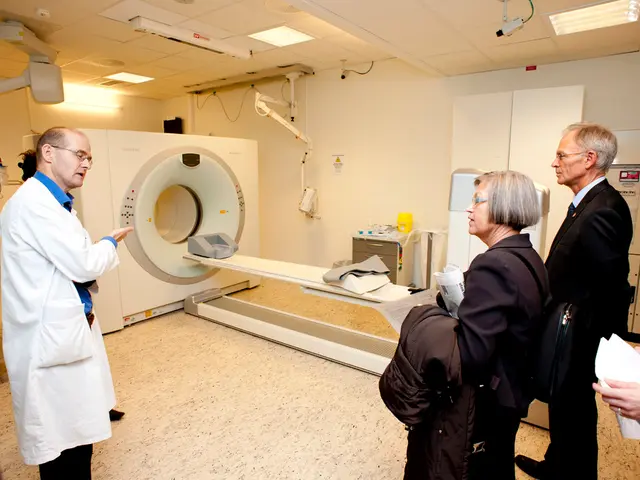Sunlight Exposure and Vitamin D Generation via UV Radiation
Let's Dive into the Wonders of Vitamin D:
- Boosts general well-being, aids bone growth, and strengthens the immune system.
- Deficiencies can lead to bone softening diseases like rickets in children and osteomalacia in adults.
- Linked to a reduced risk of certain cancers, such as colon cancer. It's beneficial for auto-immune diseases like multiple sclerosis.
Natural Sources of Vitamin D:
- Fatty fish, especially salmon, sardines, tuna, and eel, along with their oils, are excellent sources.
- Mushrooms and eggs can also provide some vitamin D.
- In certain countries, foods like milk, soy milk, and cereal grains are fortified with this vital nutrient.
Sunlight's Role in Vitamin D Synthesis:
- UV radiation interacts with a compound in the skin to generate vitamin D, primarily with wavelengths between 270-300 nm when the UV index is above 3.
- The angle of the sun above the horizon impacts production, with angles greater than 45° enabling vitamin D production, and some research suggests as low as 30°.
- The amount of time required for production depends on geographic location, season, and skin pigmentation.
Balancing Skin Health and Vitamin D Production:
- As sun exposure is crucial for vitamin D production, but excessive UV also causes skin cancer, it's essential to find a balance.
- In New Zealand, peak UV levels are higher during summer, and a significant portion of the population has skin types that burn easily, increasing the risk of melanoma incidence and deaths.
Bonus Info:
- Fatty fish, beef liver, egg yolks, cheese, and certain mushrooms are other significant food sources of vitamin D.
- Incidental sun exposure—such as a five-minute walk outside, even outside the peak UV times—may be sufficient for someone with fair skin, with darker-skinned individuals requiring up to 20 minutes. Adjust exposure times according to your skin type for optimal health benefits without risking sun damage.
Sources: [1] Why vitamin D is important and how to boost your levels by Amy Myers, MD (Source: www.amymyersmd.com)[2] Understanding Sunscreen and Vitamin D by William B. Grant Ph.D. (Source: www.grant-phd.com)[3] Skin Cancer Facts by the American Cancer Society (Source: cancer.org)[4] Vitamin D Deficiency: Causes, Symptoms, Treatment, and Prevention by Healthline Medical Network (Source: www.healthline.com)[5] What You Need to Know About Sunscreen* by Mayo Clinic Staff (Source: www.mayoclinic.org)
- Science reveals that vitamin D, essential for overall health-and-wellness, plays a crucial role in medical-conditions such as bone growth, immune system support, and reducing the risk of certain cancers like colon cancer. Its benefits also extend to auto-immune diseases like multiple sclerosis.
- In the realm of health-and-wellness and skin-care, balancing vitamin D production through sunlight exposure and reducing the risk of skin cancer is paramount. This can be achieved by taking a few minutes of incidental sun exposure, joining the dots between maintaining vitamin D levels and achieving optimal skin health.








